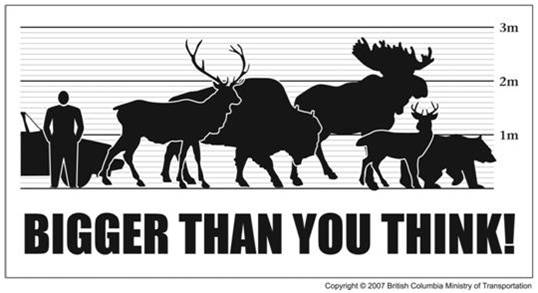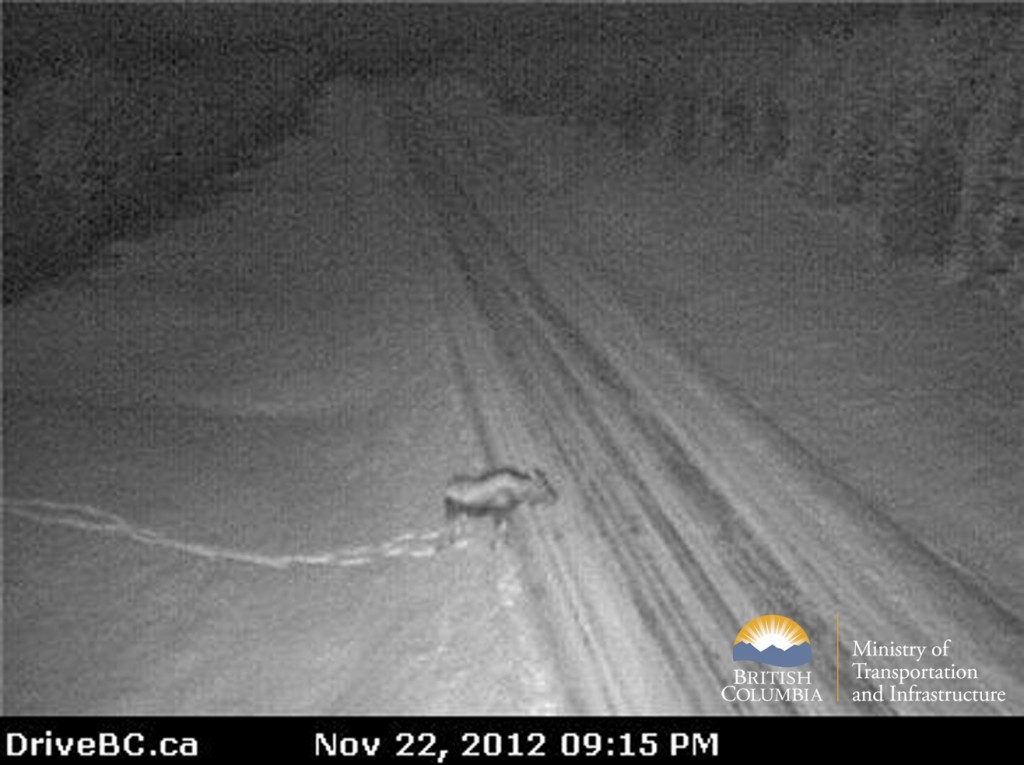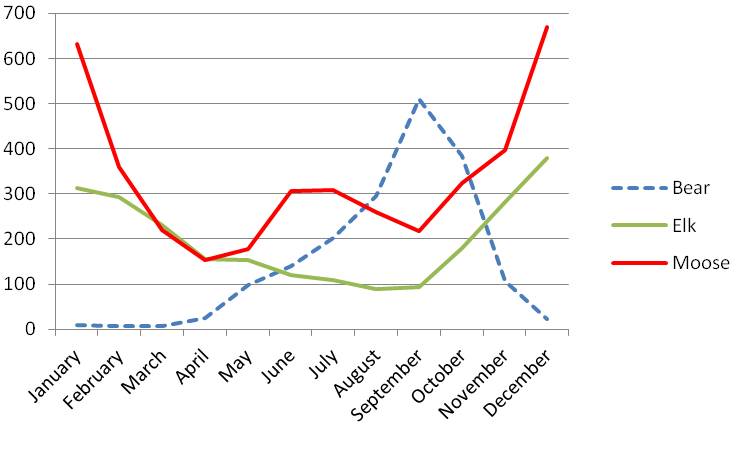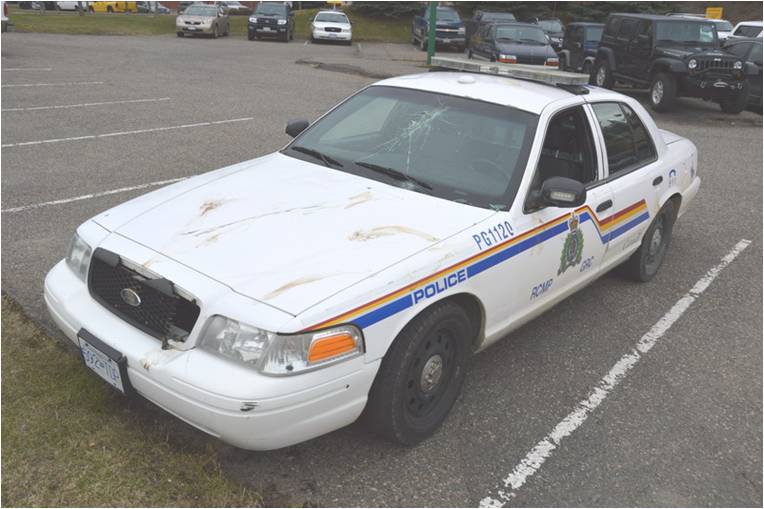
The majestic moose is the second largest animal in BC and ranges through most of the province, with the exception of coastal areas and southern BC’s dry valleys. But it’s a regal beast you don’t want to get too close to. That’s why you’ll see moose warning signs posted by the Ministry of Transportation and Infrastructure on some stretches of highway.
Weighing up to 600 kilograms and standing as tall as two metres high at the shoulder, moose are bigger than you think — a collision with one can badly damage you and your vehicle. The tricky thing is that as humongous as moose are, spotting one in the dark can be difficult. At night everything becomes less visible to motorists, and moose with their dark coats, can blend into the surrounds until you’re up close. Like deer, they have reflective eyes, but the headlights of most passenger vehicles are beneath a moose’s lofty gaze.
The low visibility of moose at night is wise to consider in winter, with daylight hours at their shortest. And if you live or travel in northern BC, where about 70 per cent of BC’s approximately 210,000 moose dwell, you’ve got the longest hours of darkness in the province.
While people are often out and about less in the coldest months, moose stay active. They (and elk), with their long legs, big hooves and powerful bodies, plow through snow more easily than deer. In winter, all three species of animal seek out valley bottoms to shelter from the wind, and of course those areas can be natural places for highways.

When Collisions are Most Common
Ministry statistics show that vehicle collisions with moose reach their peak from November to February. While collisions with deer are much higher, the outcome is usually less drastic for motorists because of the deer’s smaller size.

While the annual peak of moose-vehicle collisions occurs in winter, there is a spike in summer. The University of Northern British Columbia has conducted research to help understand when and why moose visit roadside mineral licks, to help with asssessing the risks of moose-vehicle collisions and developing strategies to mitigate collisions. A study, led by Dr. Roy Rea and funded by the BC Ministry of Transportation and Infrastructure, meticulously observed and analyzed adult moose at five roadside mineral licks in north-central BC, from July 2012 to July 2020.
Staying Clear of Moose
The key to keeping a safe distance from moose (or any wildlife) is to drive within the speed limit, stay alert, watch for signs that indicate the area is popular with wildlife and avoid distractions. This means not eating, tuning the radio, grooming or doing any other distracting activities. (And of course you would never think of using a handheld device while driving!) Never throw food out of your car. This attracts moose and other wildlife to the roadside. When driving at night, be sure you’re rested and fully awake. If you have a passenger along with you, place them on watch through the signed areas.
While moose can be somewhat mild-looking, according to Wikipedia, in North America they injure more people than any other wild mammal. (Hippopotamuses hold the worldwide title). A passenger vehicle that hits a moose at high speed breaks the moose’s legs, which causes the moose’s body to land on the car’s hood and windshield, crushing the front roof support beams. This can be fatal to people in the front seat. (And an unhappy ending for the moose too).
Wikipedia cautions, “Although vehicles with higher clearances (such as trucks) are typically immune from this effect, the force of striking any 270+ kg (600+ pound) object at high speed should not be underestimated.”
If you see a moose at the side of the road, carefully slow down but don’t honk; a harassed or startled moose may charge. They have a reputation for being touchy and unpredictable – as demonstrated by one in Prince George, who decided to show an RCMP officer and his parked vehicle who was superior. (The moose came out on top – literally – when it stepped onto the cruiser’s roof). As a pedestrian it’s also wise to stay clear of this critter.

The stately moose is an animal you don’t want to go hoof-to-vehicle or hoof-to-toe with, on BC highways or any place. Like most solitary types, it needs its space. So, it’s best for your safety and the animal’s well-being, if you miss the moose.
Thanks for the article.
Our pleasure, Michael. Thanks for commenting!
“The majestic moose is the second largest animal in B.C.” what is the biggest?
Hi Michelle, thanks for the question.
It’s the biiiig bison.
From http://www.env.gov.bc.ca/wld/documents/bison.pdf
As this report from the Environment Ministry says, “Often referred to as buffalo, a term more properly confined to the African and Asian water buffalo, this is British Columbia’s biggest land animal, and one of its rarest.”
Really liked what you had to say in your post, The Mighty Moose on BC Highways: A Force to be Reckoned with | TranBC, thanks for the good read!
— Lindsey
http://www.terrazoa.com
Glad you liked it Lindsey!